Saturday 5/24
I slept in a little more than usual this morning, waking up around 8:00. Andy and I were up and figuring out what we were going to do for the day when we got a txt from Billie, saying that he would pick us up soon. Around 9:30, Billie, along with a man named Dennison who we met last night, and the driver named Alex (I think) picked us up and we started the almost 3 hour drive north to Kundasang. There was a festival there, underneath the towering Mount Kinabalu, that was celebrating the Kinabalu Geopark. Along the way we stopped at a roadside restaurant for Sinalau, which is smoked wild boar. I have to be honest when I say that this rivals some of the best BBQ that I have had in the US. It was different, small pieces of fatty pork, served with rice, but just as delicious as something you might have at home in the US. After that we dropped of Dennison at his small village, and the rest of us continued to Kundasang. As we got closer, the roads became steeper and windier, and when we got to be about 45 minutes away we got our first views of Mount Kinabalu. The top of the mountain was in the clouds, and unfortunately stayed that way the whole time, but there was no doubt that we were looking at the largest Mountain between the Himalayas and Puncak Jaya, in West Papua. Mount Kinabalu is 13,000 feet high and looks every bit of it.
When we arrived in Kundasang, we were in the shadow of the mountain in a small plaza. Inside the plaza there was a stage with traditional singing and dancing, vendors, and Sabah Parks information tents that talked about the wildlife and geography of the park. Outside the plaza there were more vendors selling food and drinks. Andy and I explored the information tents, watched some really cool performances, and went aand got some food. After that we got to talking with some different parks employees about Kinabalu Geopark. While talking to Dr. Nasrulhakim Maidin, director of International Relations for Sabah Parks, he explained to us the difference between a geopark, and a normal National Park. First, a National Park is US based classification compared to Geoparks, which are European and a UNESCO classification. Furthermore, Geoparks include not only a park, but also surrounding communities. He said part of what makes something a Geopark is community and Culture. We really enjoyed talking to Dr. Maidin, and I think he enjoyed speaking with us as well. After that we enjoyed the festivities for a little longer and then left around 4:00. We only had two hours to be there but I really enjoyed learning more about the parks, and getting to experience the culture of the area. Driving home, I enjoyed taking in all of the views again, and when we got back to Keningau we stopped at the grocery store to get some food, and stopped again to meet Alex’s family to get dinner at a small plaza. We had another pork dish, served with okra and rice, and by the end of the meal everyone was getting tired. It was fun to meet Alex’s wife and three children, the oldest being 14 and the youngest being an adorable 11th month old boy. After dinner we were taken back to the rest house and went to bed shortly after. I am writing this post on the morning of Sunday the 25th. Later today I will be picked up and taken to Bayayo where I will have no cell service for the rest of the week, So I will not be able to post again until next weekend.

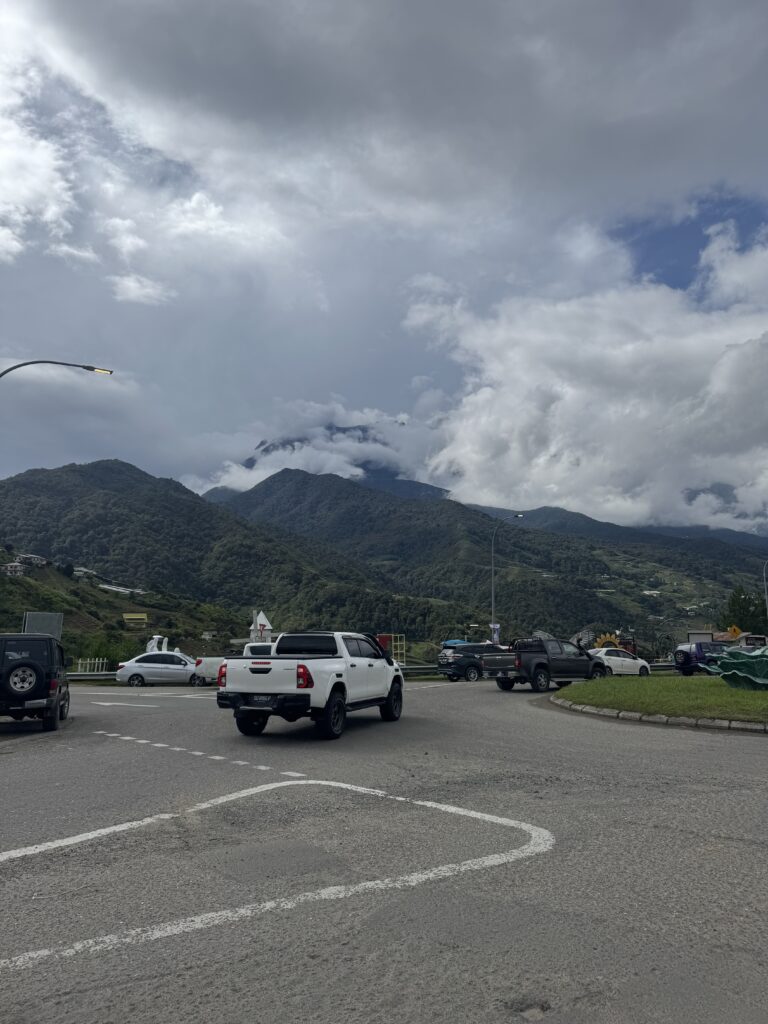
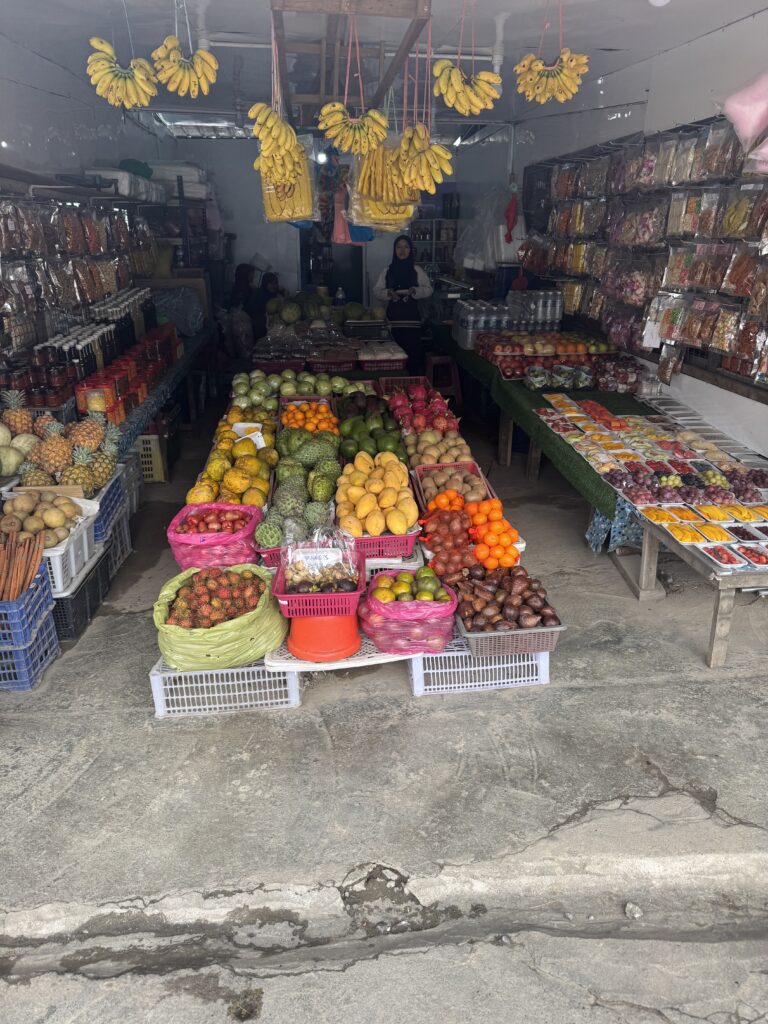
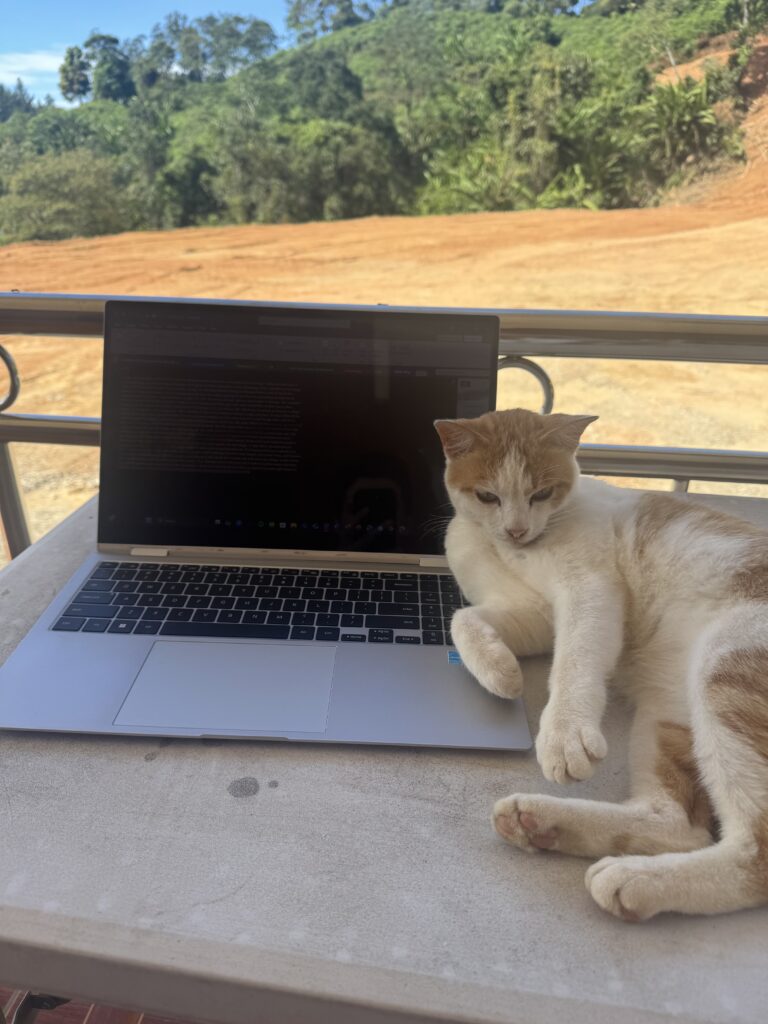
Friday 5/23
I woke up once again around 7:00, had a small granola bar breakfast, and packed up my things. Today the plan was to leave Malidang, go pick up Andy at Bayayo, then go to another substation at Ulu Senegang. Once I packed up my things, I read until it was time to go. I’m currently reading The Monkey Wrench Gang, by Edward Abbey, a book about the American Desert Southwest. It is an engaging book and I am really enjoying it, but there is something strange about reading about the desert while being in a jungle. At 9:00, the driver arrived, and we were taken to Bayayo. We stopped there for about 45 minutes, having a small snack of papaya and fried rice with what tasted like chicken curry. After hanging out for about 30 minutes, Andy packed his things in his car and we left. We drove for about an hour to a village called Ulu Senagang. Ulu Senagang is where Rasidi is from and it ended up being a really cool place. It was a little off the beaten path, but it has a beautiful little river that comes straight out of a core zone of Crocker Range Park, and flows right through the village. It also has a substation and information center for the park. When we first arrived, we met with the man in charge, named Guill (I think that’s how its spelled). We then went right away to the information center and learned about the Crocker Range and Ulu Senagang. The main purpose of the substation there is community use. The village lies within the park boundary, so the village and park work closely together to ensure sustainable practices, particularly regarding agricultural practices. After exploring the Information Center, Andy and I each helped to plant a Rambutan Tree. Then we went to what seemed to be the main garden for the village. To get there, we parked and walked over the river across a small bridge made of cables and wood that did a lot of swinging when you walked on it. When we reached the other side there were a couple small buildings, but there was largely just Cacao Trees, and Banana Trees. They explained to us that the Cacao trees belong to the whole the community and when the village needs money for something they will harvest and sell the Cacao. They showed us how they harvest it and try out the beans and then we left the garden and went back to the Substation. There we had time to just relax, so some of us went right down to the river to take a dip. The water was cool, but not too cold, and crystal clear. The substation is right at the end of the village and the first place the river flows by when it leaves the core zone of Crocker Range Park, so the water was about as clean as it gets. Andy and I hung out in the water for a while and were joined by Guill. We talked with him about a whole bunch of different things in a mix of Malay and English and we all had a great time.
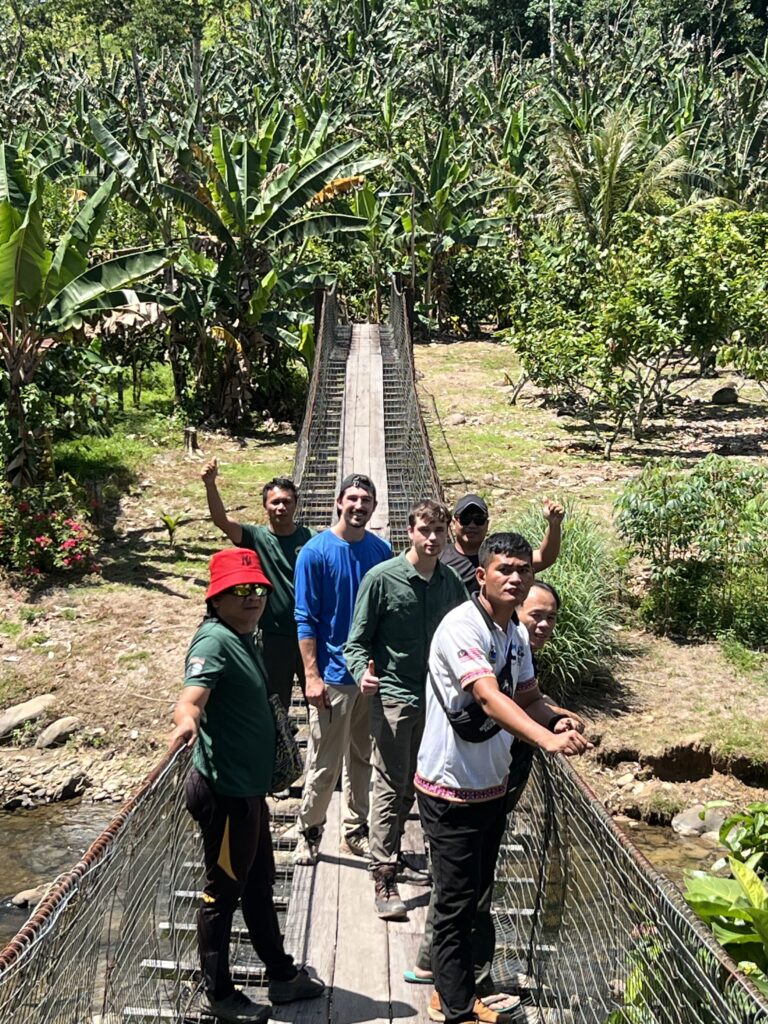
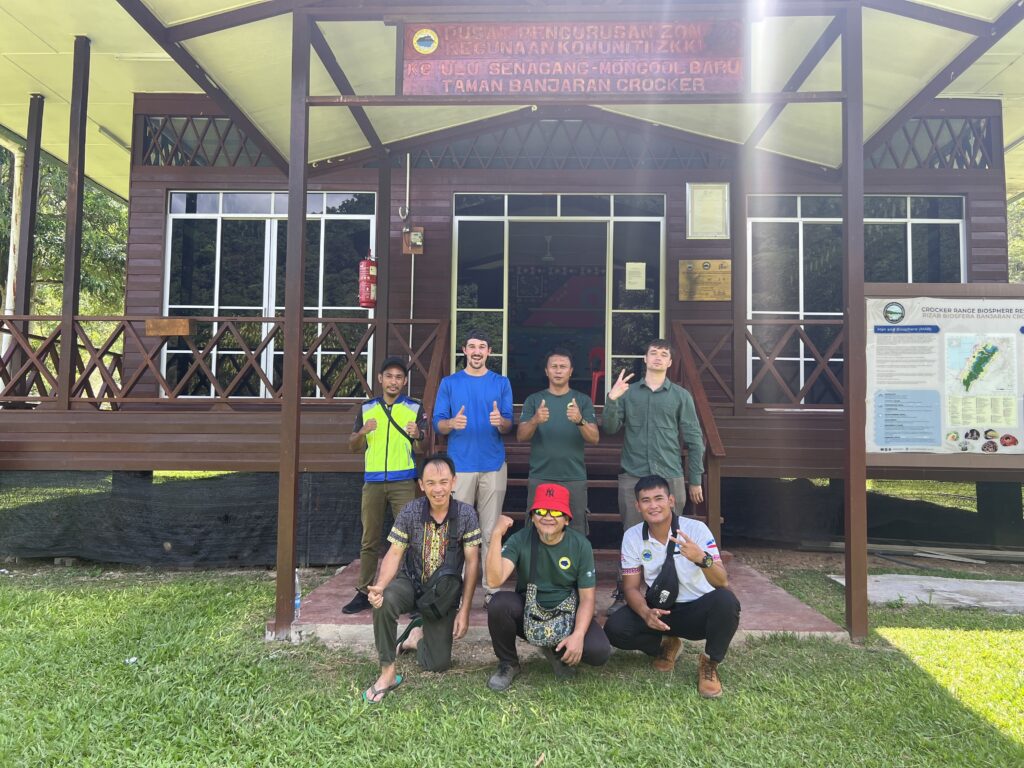
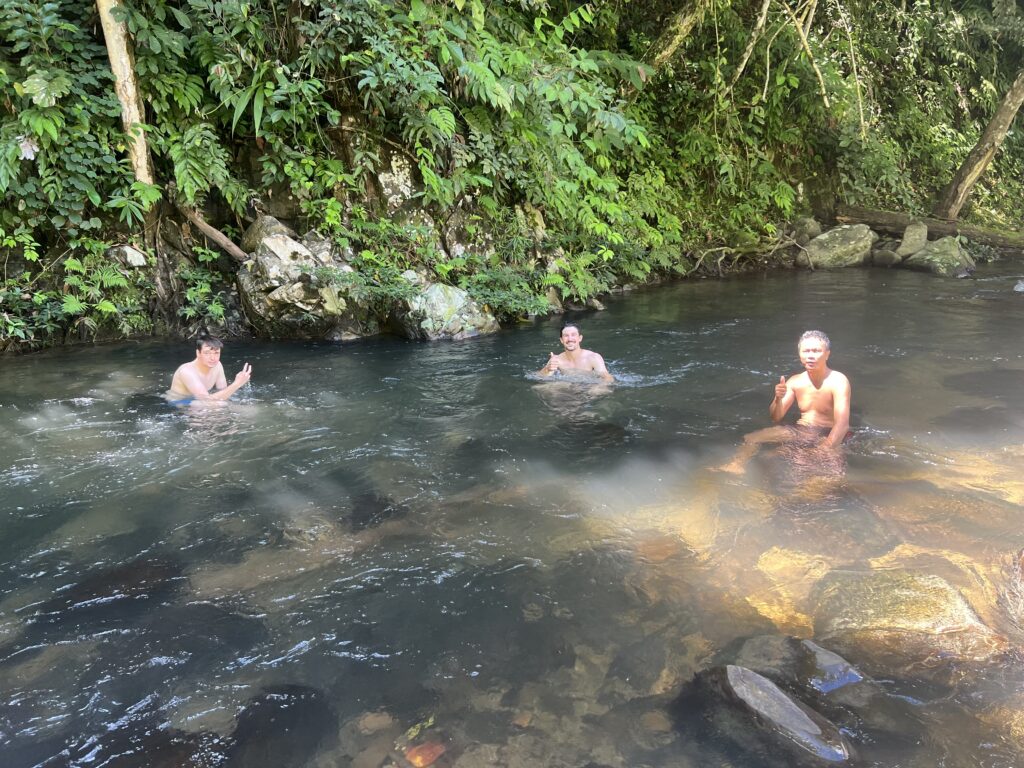
When we got out of the water we had some coffee under a pavilion, and left about 20 minutes later. We were about finished for the day and it was time to head back to The rest house where Andy and I stayed on Monday the 20th. On the way back though, we stopped at a little roadside resteraunt. I had Ayam Penyet, or smashed chicken. It was chicken that had been squeezed, then fried, served with okra along with fried eggplant, and as always, rice. It was a good meal. After that we arrived back at the rest house around 6:30 and just relaxed. We saw our friend the cat again, although now we figred out that her name is Oyen. She is super cute and loves to sit on our laps. Andy and I talked about our weeks for while hanging out with Oyen, then got a text from Billie, the Keningau District Manager asking us if we would like to go hang out with some him and some others at his place. We accepted the invite and were picked up and taken to his employee housing near the Keningau office. We hung out there for a few hours, talking about everything from sports and music to life in the US compared to Malaysia. We tried fried jackfruit, fish soup, and even tumpun, the local rice wine. We had a great night talking and laughing with everyone but went back to the rest house to go to bed around 10:00.
Thursday 5/22
This morning was the same routine as the day before. I woke up at 7:00, did some reading and had some tea, and then got ready to head up the road at 9:00. Today’s objective was to head back to the ginger farm, see the fields, and learn how it is harvested. So Rasidi, Datu, Galis, and I started the couple kilometer walk up the steep road. We reached the end of the road and turned off onto the steep, muddy path. This time, close to the small garden that we went to yesterday, we took a different turn that went much further, and probably more than doubled the distance. We descended further along the still muddy trail, crossed a stream using a bridge made out of two logs laid side by side, and eventually approached a small hut. While approaching the hut, there pieces of bamboo cut longways, and placed end to end coming down the hill, acting as a kind of makeshift aqueduct. It was actually really cool. This bamboo aqueduct ended by the hut, where a boy was washing off ginger. Rasidi and the boy exchanged a few words and he directed us to a trail on the other side of the hut that quickly crossed a fast flowing, crystal clear stream, and ascended up the steepest hill we had encountered yet. Not too far up that hill, it became slightly less steep, and we found a group of about 6 people harvesting ginger. The first two people we came across, a man and woman, were sitting under a tarp that was strung up between trees for shade, cleaning off huge pieces of ginger, or halia as it is called in Malay. And there was a ton! We sat and said hello to them, and then we went 50 meters up the hill were a group of women and a young man were harvesting the ginger. The main parts of the plant had already been chopped off, so what we saw were pieces of the root poking up out of the dirt. The women harvesting had short medal rods, almost like a crow bar. They would use this to do a little digging around the root, then pry the ginger up out of the dirt. After that they brush off large pieces of dirt, and throw the ginger in a pile. One of the women showed me how she does it, then asked if I wanted to try. Of course I said yes, and got to pry up 3 of the roots. Everyone seemed to get a kick out of it and there were lots of smiles going around. Actually, I would say that the people here had smiles on their faces 90% of the time that we were there. I don’t think they get many visitors there, especially American visitors. After I got to try harvesting we took some pictures, and they gave me probably a couple pounds of freshly harvested ginger to take with me. I expressed my thanks about 10 different times, “Terima Kasih” and then Rasidi, Datu, Galis and I went to look at a 1 month old field that they had planted nearby. This was on an even steeper hill and we climbed to the top of it and checked it out. Afterwards we headed back down the hill and walked back to house where everyone was taking a break. There, a woman gave us some white chiles, a leafy green vegetable called hongkong, although they said its not from Hong Kong! And then she also cut me down a sugar cane stalk to chew on. Once again all smiles. We all thanked them for all of the gifts and started our walk back up the trail. I talked to Alfred about the people on the way out and he explained to me that they are a big family, and that they, like many others here, enjoy having company. Their kindness and generosity meant a lot to me, and their smiles were contagious.
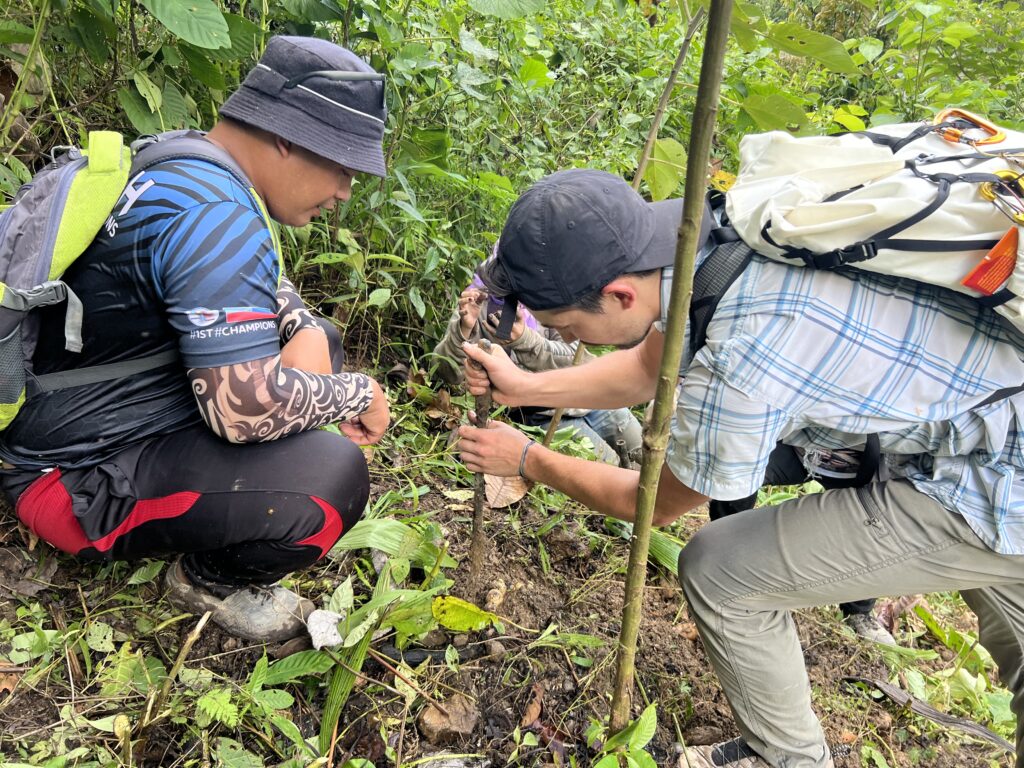
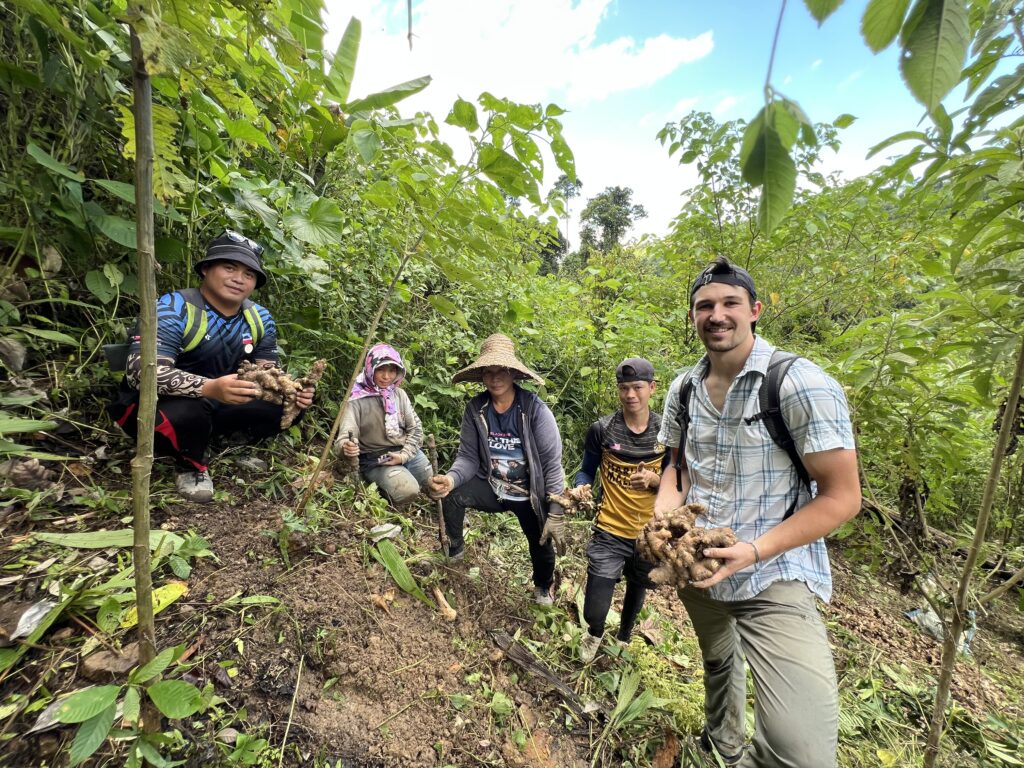
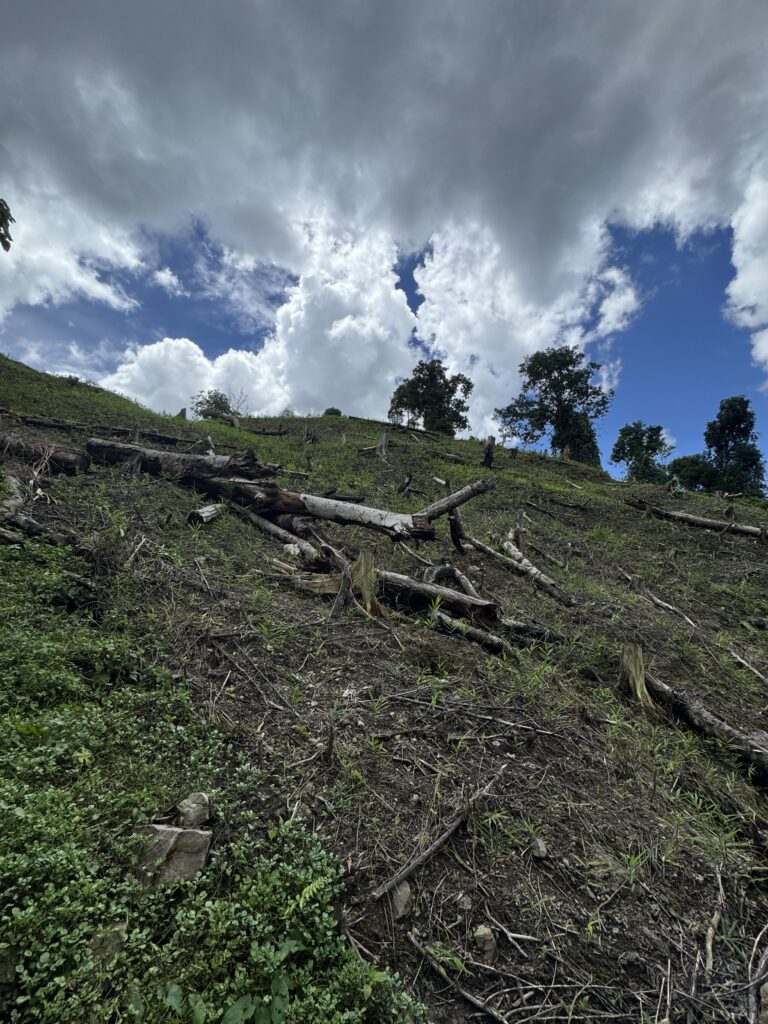
When we arrived back at the control post, we were done for the day. For lunch we had rice, fried eggs, and the hongkong that the family had gifted us. I think it tasted extra good, knowing where it came from. The rest of the day I read and we hung out at the station. For dinner they cooked the banana heart with anchovies, more hongkong, and of course rice. The banana hearts were not bad, but I do not really enjoy anchovies so it was kind of rough to get through. That was probably the first meal that I’ve had here that I did not love, but it wasn’t that bad. Again I went to bed at around 9:30 and fell asleep fast.
Wednesday 5/21
The next morning I got up around 7:00, did a little reading, and a cup of NesCafe Instant Coffee. Then, around 9:00 it was time to get started. We grabbed water and snacks and started to walk up the road further than the control post. The goal for the day was to go through the inventory of community uses in the area. This is the Transition Zone in the park where communities are still able to use the land to farm and do other things. Our first stop, a couple hundred meters up a steep hill, was at a rubber farm. There was a small hut, raised on stilts not far from the road and it was surrounded by rubber trees that had been planted in rows. We met with the owner and talked with him for a little bit, although he did not really know English and I tried my best to keep up with the Malay. Then I was allowed to try cutting a rubber tree to harvest the latex. This is done with a handheld tool with a blade in the shape of a notch that cuts away just small strips of bark. Cutting at a diagonal angle that wraps around about 1/3 to 1/2 of the tree and placing a small piece of metal into the tree at a perpendicular angle allows the latex, or the sap of the tree, to flow down the ridge of bark below where the tree was cut and then into a container placed below the piece of metal. It was a really cool process to see and to experience. The latex is bright white and starts to flow pretty quickly immediately after being cut. After thanking the man for allowing me to see how it all works, we continued further up the road. Our next stop was a large fruit garden with a nice vantage point looking out over the large flat valley that contains Keningau. The farmer was not home, but Rasidi and Datu pointed out all of the different plants in the garden. Avocado, Mango, Banana, Durian, Sugarcane, Rambutan, and Coconut. I wouldn’t be surprised if there were even more that we could not see. We stopped here and had some water and a snack and also petted the resident cat that lived there. Then, walking further up the road, we stopped at another rubber farm and got to see the rest of the process of how rubber is made. We got there just in time for a man to show us that after the latex is collected from the trees, it is mixed with a little bit of vinegar is 5 gallon buckets, then poured into little plastic, rectangular molds to settle. That’s all there is too it. Give it a few hours and you get little bricks of white, squishy rubber.
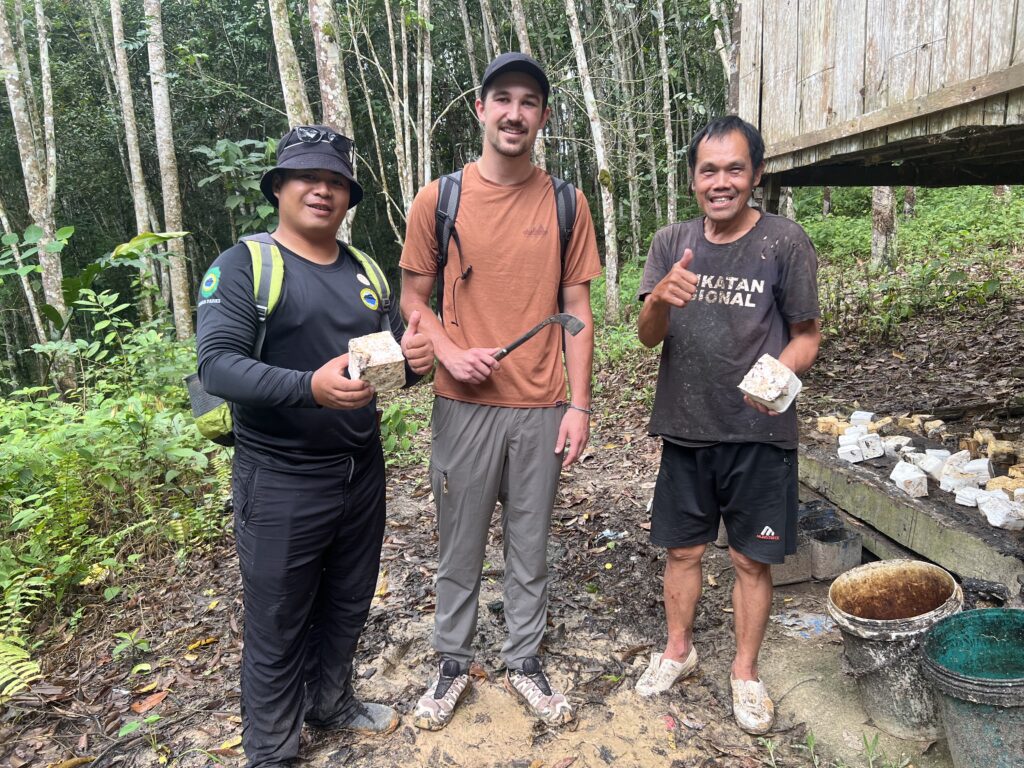
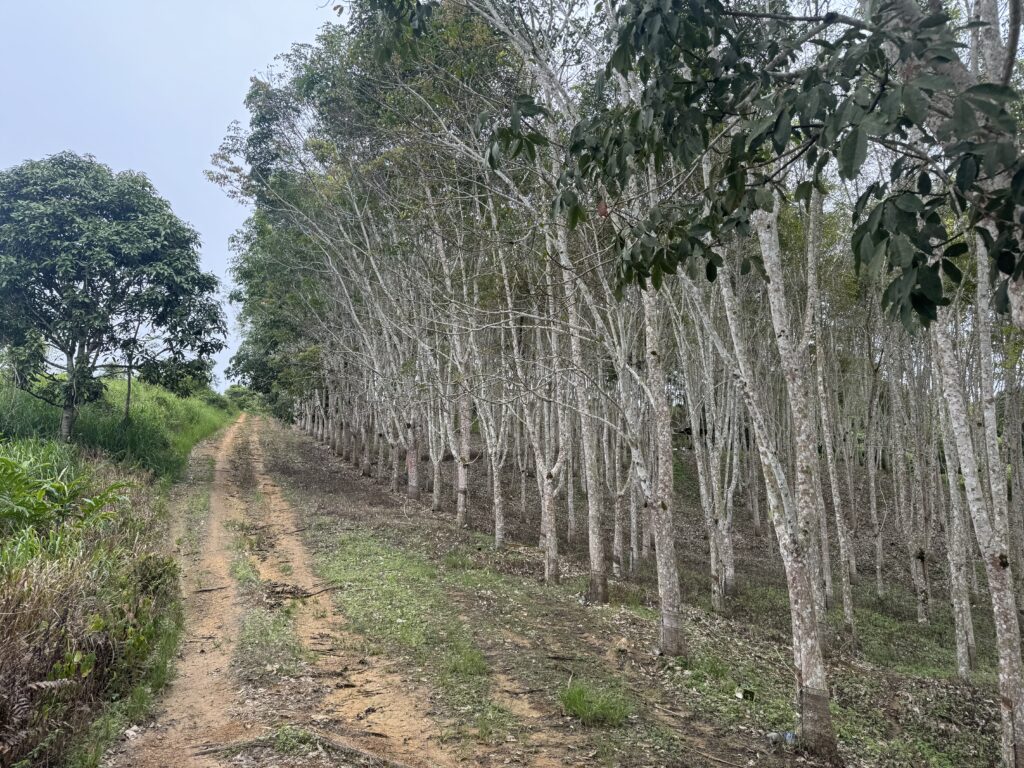
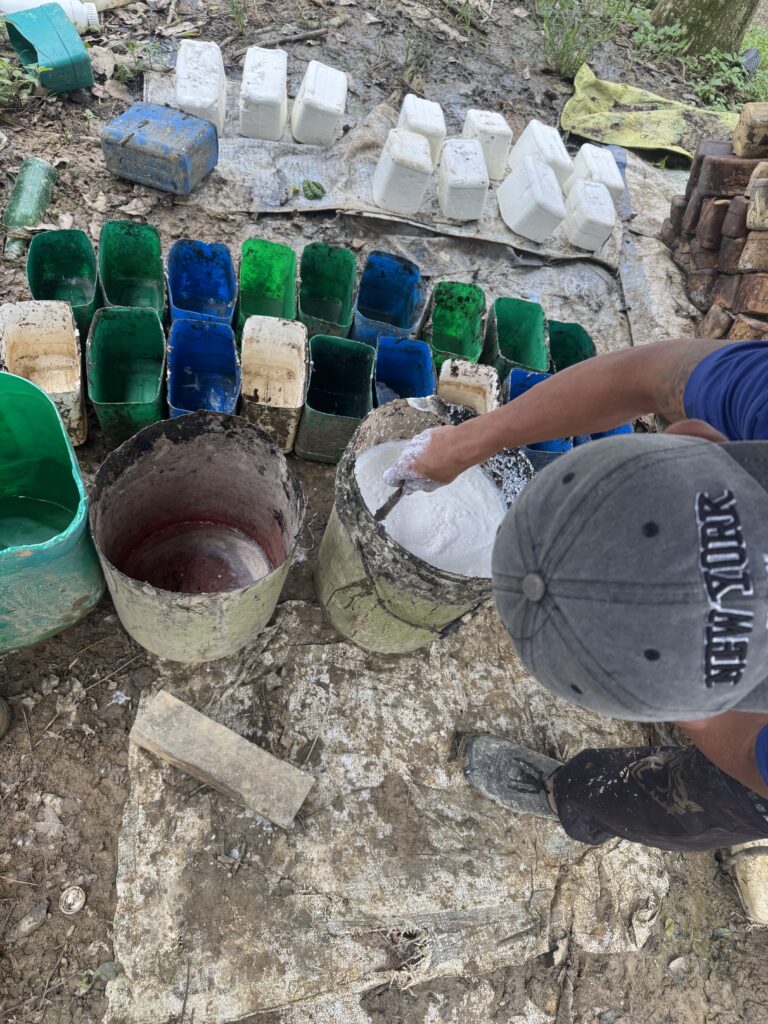
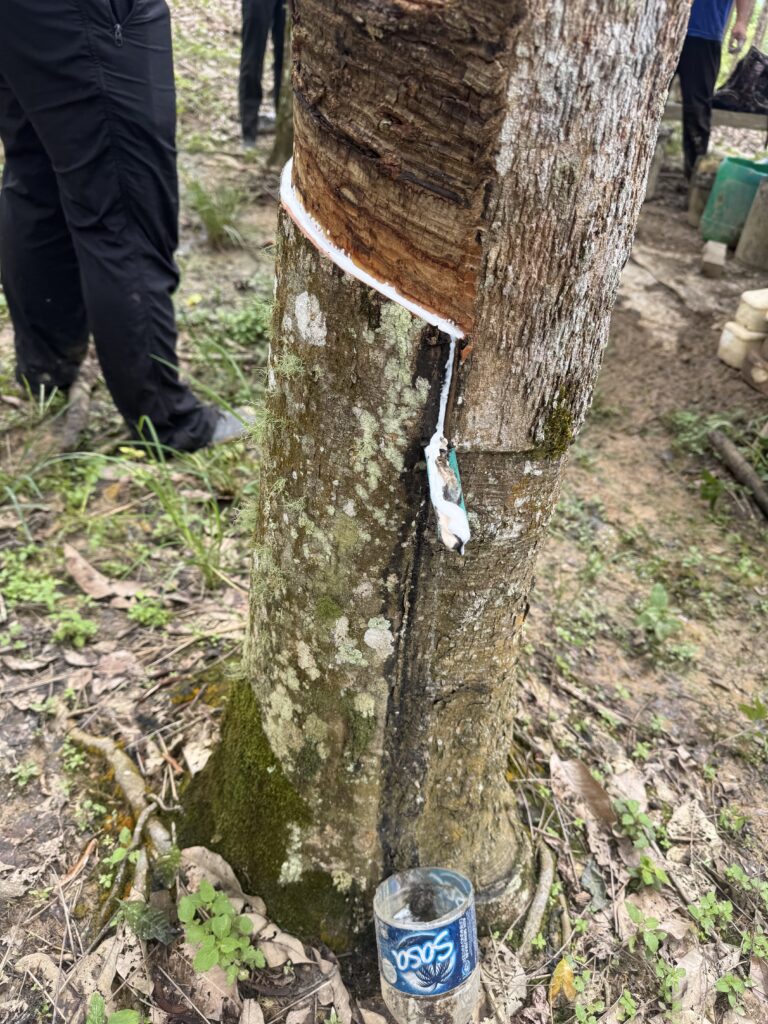
Leaving this rubber farm and walking even further up the steep and muddy hill, we reached a turn and descended to go to a ginger farm. We went from the muddy road to and even muddier trail heading down a hill. It’s funny, there’s so many unfamiliar things here, but one thing that I guess just doesn’t change is the smell of mud. The smell walking down that trail was the same smell as when I would swim in my grandmas pond when I was younger. Coming out of the thick brush of the trail we arrived at the farm to find Pineapple plants, a small hut, a dog and a cat, and a small garden of ginger planted on a small round hill. There was a great view of the surrounding mountains and a nice cool wind was blowing which felt amazing. Unfortunately nobody was home so we just sat there and had another snack break before heading back up the steep muddy hill. Along the way, we stopped at a banana tree that had small green bananas growing. They grow on a long stem and at the end of that stem is what looks like a large, red bud. This bud is called the banana heart, and it can actually be unpeeled, boiled, and eaten, so we grabbed two of these banana hearts to take back to cook at some point. After that we headed back down to the control post where another worker, Galis, who was at Bayayo the day before was waiting for us with lunch already made. Chicken and Rice. I don’t know how to explain it, but the chicken here is very good. Beyond the way that it is cooked, I would say that the meat itself just has more taste to it. After lunch we took a break and rested. I read for about an hour. Then, at 4, we went out into the clearing around the control post to plant about 10 saplings along the one tree line. They told me the name of the trees in the local language but unfortunately I didn’t write down the name and I already forgot it. After that, we were done for the day. Santai, steady. I read for a while then we all got to talking about various things. Initially I had told Rasidi I know about 5% Malay. At the end of our conversations he said he would boost my score up to 10% and possibly even higher tomorrow. It was fun to practice my speaking with them and I do think that I am slowly but surely learning more and more. After talking for a while, we were all getting tired and I went to bed around 9:30.
Tuesday 5/20
Not sure what time we were being picked up to be taken to our control posts for the week, we woke up around 5:30 am, ate a granola bar breakfast, and got packed up by about 7:00. Then Andy and I went out onto the porch to do some reading. While we were sitting there, a local cat, who Andy right away named George, came to hang out with us. George was super social and loud, he even sat on Andy’s lap and took a nap while we read.
At 9am we were picked up from the Rest House and Taken into the small city of Keningau by a driver and another man named Rasidi. There we stocked up on some last minute supplies such as water and insect repellent, then went to a small food court for a late breakfast. It was a big breakfast consisting of rice, some kind of pork soup, some small dumplings, and eggs mixed with some greens. To drink we had cold milk tea. It is almost always coffee or tea to drink here with all meals, always the option of having the beverage hot or cold. I almost always choose cold because of how hot it is here, but it seems like most people opt for their beverages to be hot.
After lunch the driver and Rasidi had to run a couple more errands in Keningau and then we headed towards Control Post Bayayo to drop off Andy. The drive to Bayayo wasn’t far, but about halfway there we turned up a dirt road that would probably be better classified as a trail. It started off not so bad, but worsened the further we went. On the side of a steep hill, with a river running below, it was beautiful, but in a few places barely wide enough to fit the Toyota Hilux truck that we were driving. To make matters more interesting, the road was incredibly rough and uneven due to a heavy rain from about a month ago and in some spots, almost completely washed out. It certainly felt like we were going deep into the jungle. When we made it to the post, we were greeted by around 6 men who seemed enthusiastic to meet us. Andy dropped his things in the room he would be staying in and we sat outside and talked in a mix of Malaysian and English with everyone. The control post is relatively new, and situated about 100 yards back from a fast moving, but muddy river. They explained that normal the river is crystal clear, and wonderful to swim in, but the same heavy rain that damaged the road had also caused a large landslide upstream, creating a dam of mud and debris that caused the river to be muddy. I will not go into a ton of detail about Control Post Bayayo now, because I will spend all of next week there, but we sat and talked for an hour before I left with the driver and Rasidi to go to Control Post Malidang.
Malidang is close to Bayayo, but to get there you have to drive back out of valley and up a new valley, then onto a ridge. It was still a dirt road, but in much better condition, and driving in there were lots of Oil Palm and Rubber Tree Farms all the way up to the Control Post, which overlooks a valley. In the distance you can see more Oil Palm and Rubber Trees. Here, my focus is on Community Uses of the area, so seeing all of the agriculture makes sense. The driver dropped of Rasidi and I, and we got settled into the post. The Post consists of two small bedrooms with bunk beds, a small kitchen with a bathroom and shower, and room with a few chairs to hang out in, and porch that wraps around the building and provides a view of the surrounding valley. Rasidi had nothing else planned for the day and he said that we will rest for the rest of the day. I had a lot of energy still, and I think he could tell but he kept telling me, “Santai, do not worry.” Santai means steady in English. He told me we will have plenty to do the rest of the week. Everyone is very laid back here, which I really appreciate. I have been looking at this internship as a kind of job as well as an experience, so I have been trying to work as hard as I possibly can and do as much as possible. But I think it will be important to remind myself to go along with the flow, and to live and work the way that the people do here. So I grabbed a book and read for the majority of the evening. It felt great, and around 5pm we were joined by another worker here, named Datu. Datu is the man in charge at Malidang, he manages and keeps track of all of the plots of land. The three of us stood on the porch and I tried to pick up as much Malaysian in their conversations as I could. We then fired up the generator, which took a little while, then Rasidi made dinner. When I asked if I could help he one gain said, “Santai! Do not worry.” His dinner was delicious. It was rice, with a vegetable called winged bean that I had not had before, but he had picked at Bayayo, and sardines, in a kind of chili sauce. After dinner, I read for a little while longer, but eventually got tired and went to bed.
Leave a Reply
You must be logged in to post a comment.